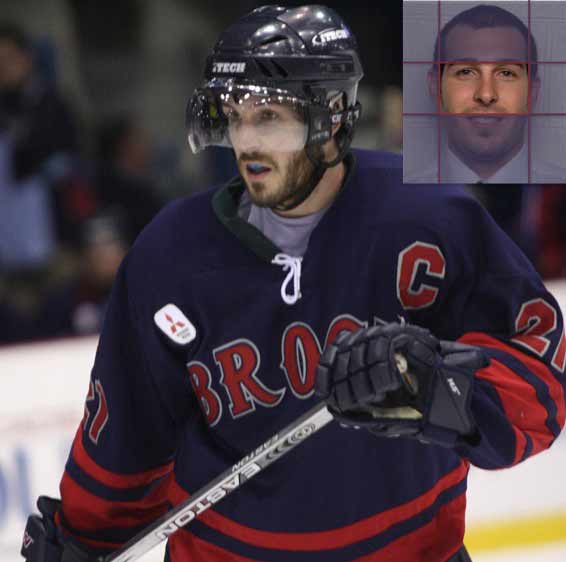Wide-Faced Men More Aggressive

Men with big mugs are more aggressive, a new study of hockey players suggests.
Men in general have wider faces than women do, a difference in the sexes that emerges at puberty as testosterone levels rise. At the same time, testosterone is tied with aggression, leading researchers to search for a link between aggression and wide faces.
Canadian scientists investigated photos of pro and varsity hockey players, measuring how wide and long their faces were. They found the wider that faces looked, the more aggressive players were, as measured by the number of penalty minutes they accrued, which are handed out for aggressive behavior.
"One great thing about hockey is that you're able to display aggressive behavior in an acceptable manner. You don't have to go to prison or whatnot for striking someone with an elbow. It makes a good setting to look at aggression," said researcher Justin Carré, a behavioral neuroscientist at Brock University in St. Catharines, Canada. Carré also used to play NCAA-level hockey, and is an assistant coach for Brock's hockey team.
In addition, the researchers tested 88 college students for aggression with a computer game where they were told they were matched against an opponent of the same sex, who in reality was just the computer. In the game, they could push one button to accumulate points, another button to protect their points from getting stolen, and a final button to aggressively steal points from an opponent they were told was stealing points from them.
The scientists discovered that face width was linked with aggression in men but not women.
"We were astounded to see that this relatively simple measurement in the face predicted how aggressive men were in a lab-based computer game, and then equally astounded to see that the same measure could predict aggressive behavior in a real-world setting, that of sports," said researcher Cheryl McCormick, a behavioral neuroscientist at Brock University.
Sign up for the Live Science daily newsletter now
Get the world’s most fascinating discoveries delivered straight to your inbox.
These new findings suggest that faces may have been shaped by evolution to signal aggressiveness to others.
"Competitors may have used this cue, likely on a subconscious level, to decide whether or not to take an opponent on," McCormick told LiveScience. Perhaps linked with these results is the fact that making an angry face involves lowering the brow and raising the upper lip, which squashes the features of your face together, making it look wider, the scientists added.
Testosterone is known to shape all kinds of physical features in men. For instance, finger length can predict how aggressive guys can be. Past findings have also revealed that male faces can signal a variety of cues, including which guys might be good for a fling or which might be interested in becoming fathers.
One shortcoming of this research is that it relied on photos of faces, instead of direct measurements. The expressions on people's faces or the way they held their heads could affect how wide their faces looked. Still, the fact that these findings were consistent across three study groups — pro hockey players, varsity hockey players and college students — "is encouraging," Carré said.
Another limitation of these findings is that the researchers do not yet know whether people are actually sensitive to this cue of facial width, McCormick said.
"For example, if people were asked to rate how aggressive men were was on the basis of photographs, would their ratings be accurate?" she asked. Or, if someone were given the choice of one of two opponents to compete against, would face width predict the choice? "These are the types of follow-up research questions that we are now investigating," McCormick said.
Not everyone agrees with how the researchers interpreted these findings. Brandeis University psychologist Leslie Zebrowitz, who did not participate in this study, suggested that "perhaps what the authors have documented is not an effect of masculine facial qualities and effects of testosterone, but rather behavioral compensation for the social effects of babyfaceness."
Zebrowitz conjectured that baby-faced men have rounder faces that might make them look wider.
"Babyfaced men are expected to be warm and weak," Zebrowitz said. "Surprisingly, I have found that their behavior is opposite to these expectations, something that could be attributed to a 'self-defeating prophecy effect,' whereby babyfaced men overcompensate for social expectations that are unpleasant for young men."
McCormick and Carré detailed their findings online Aug. 21 in the journal Proceedings of the Royal Society B: Biological Sciences. The researchers were funded by Canada's Natural Sciences and Engineering Research Council.










